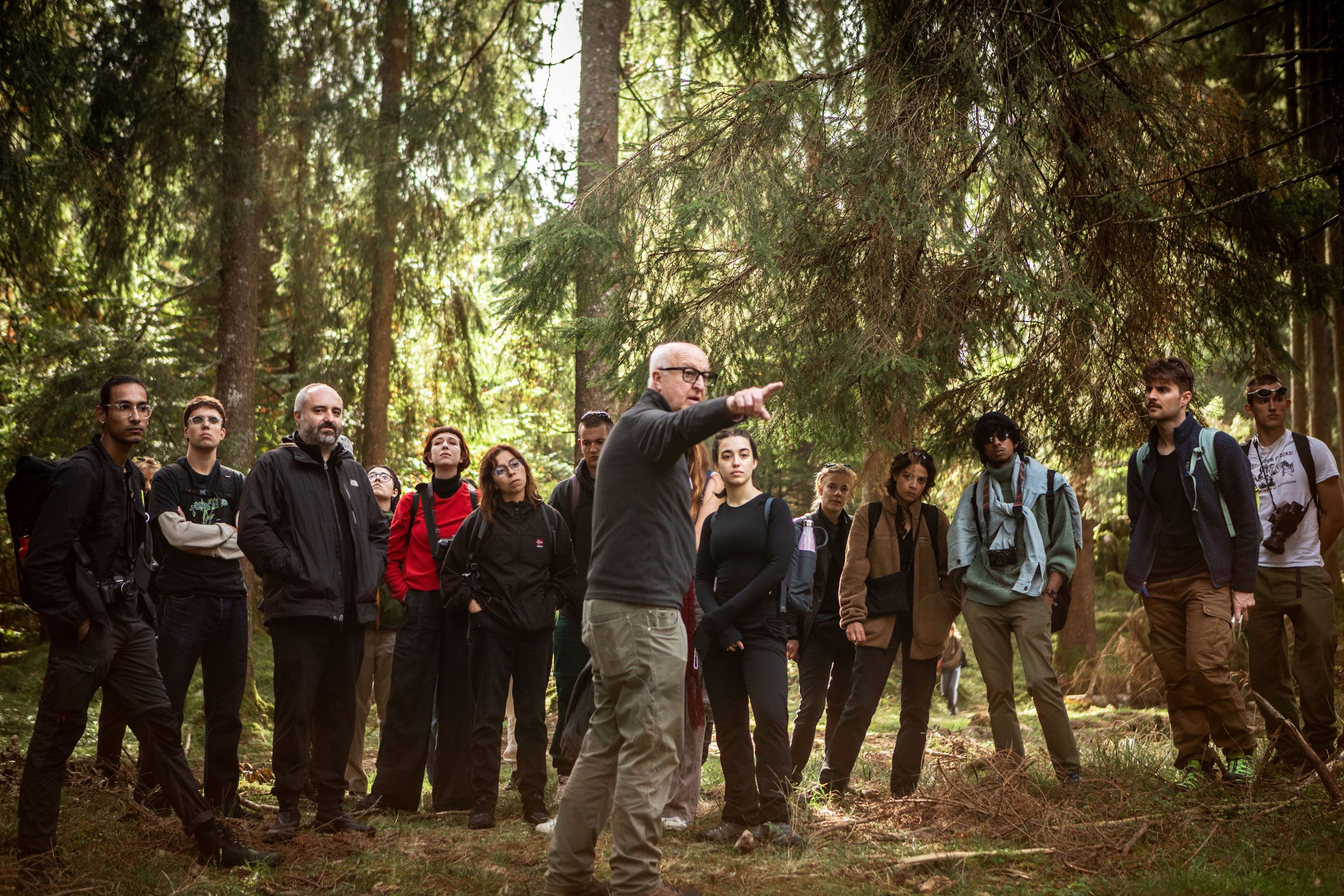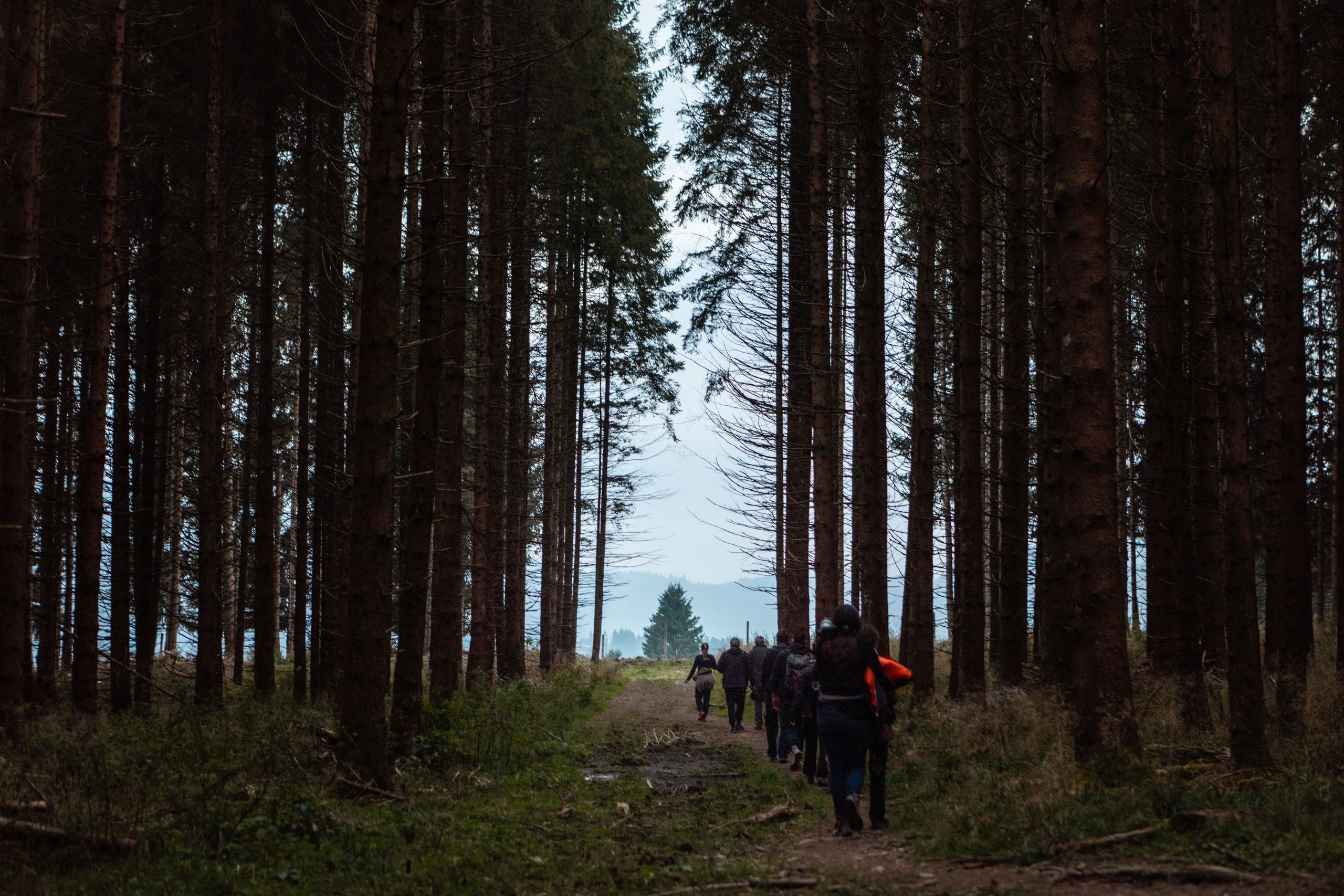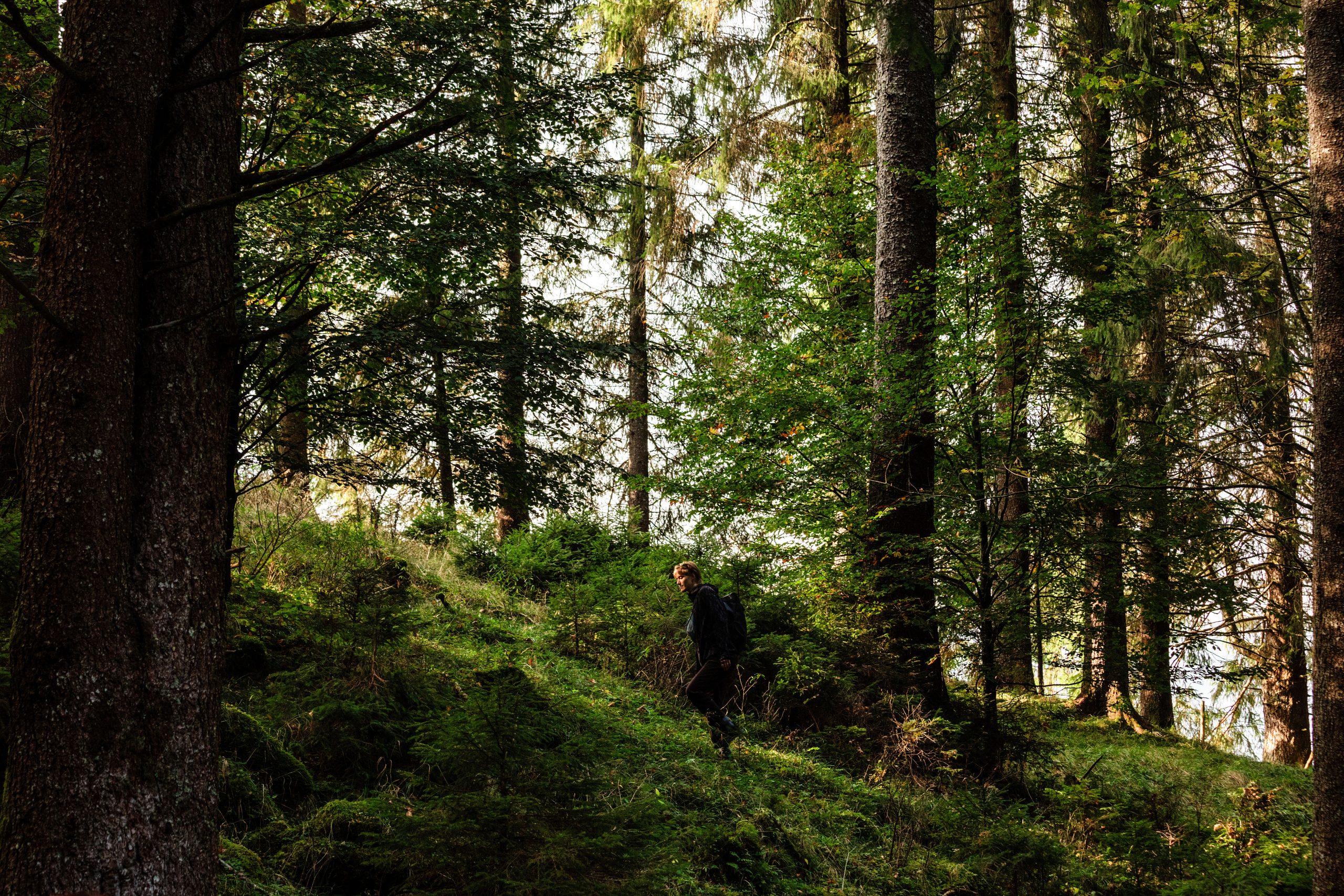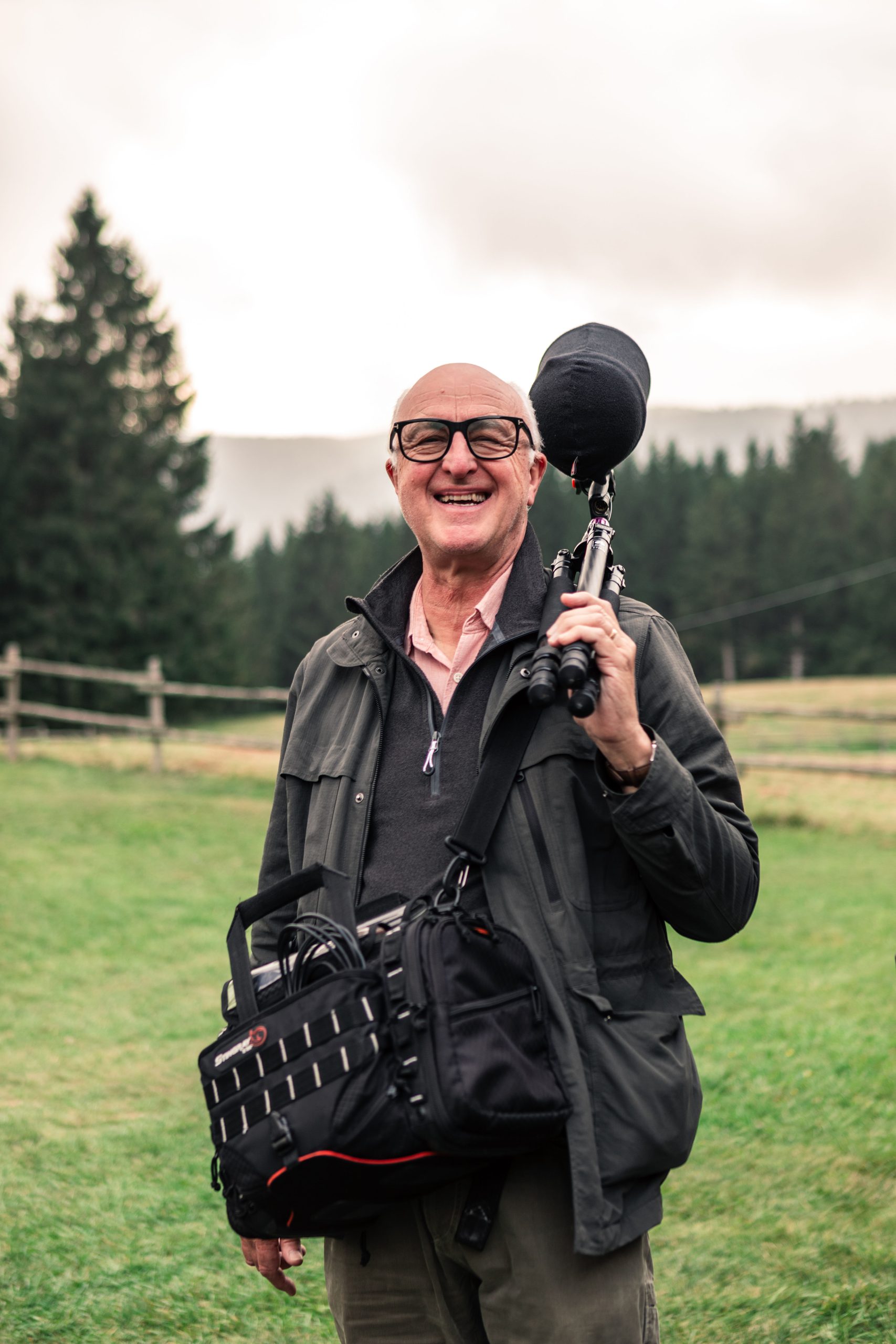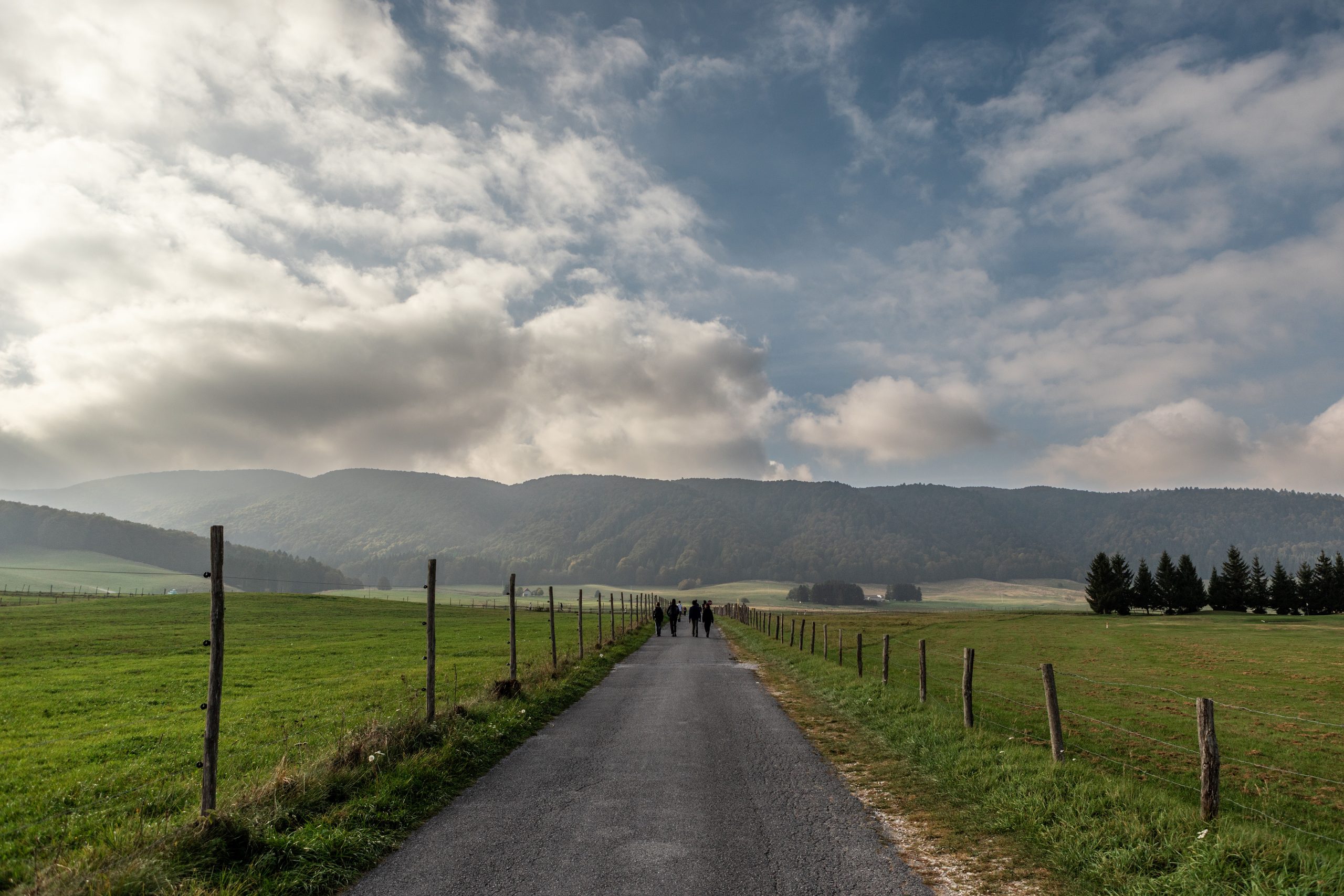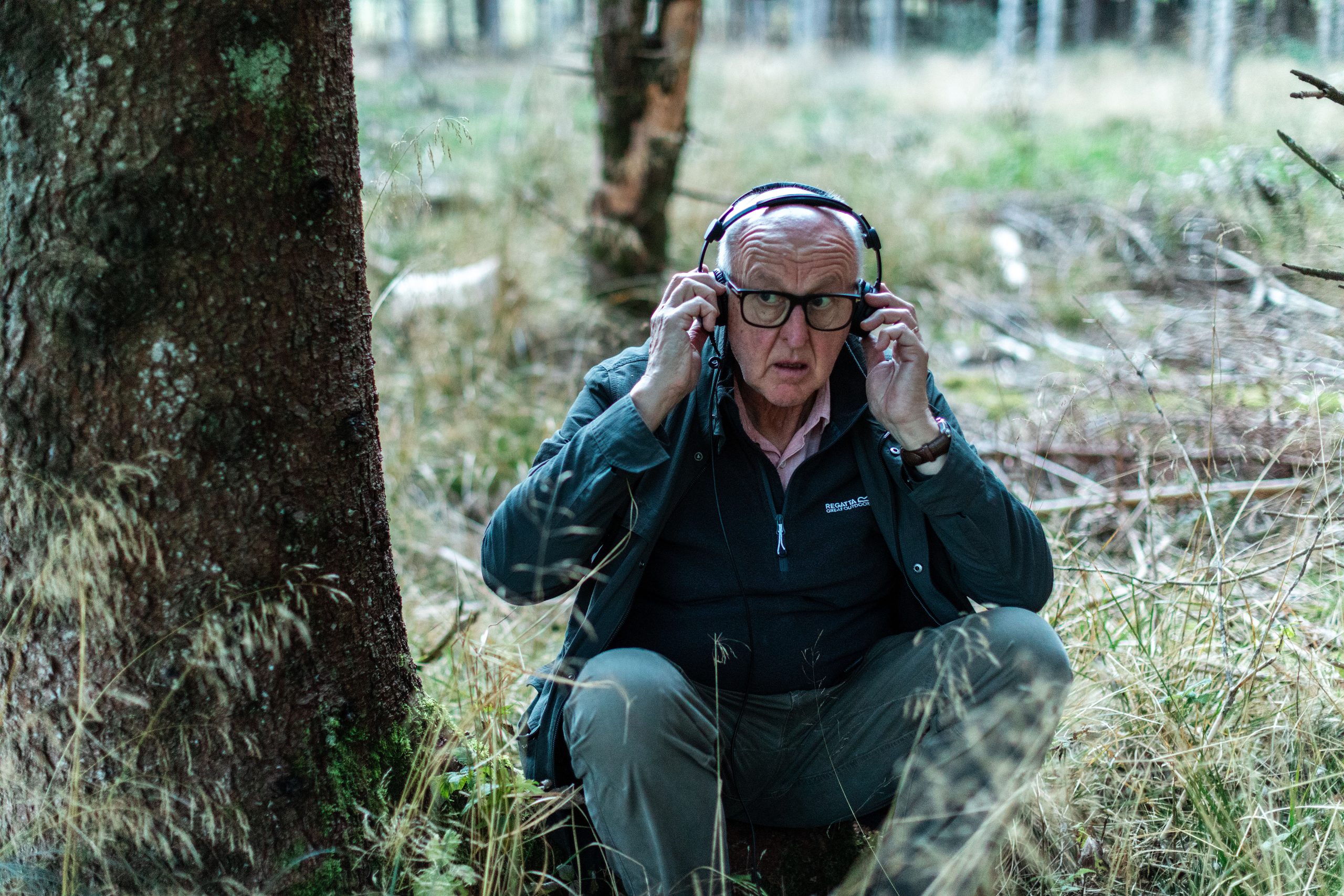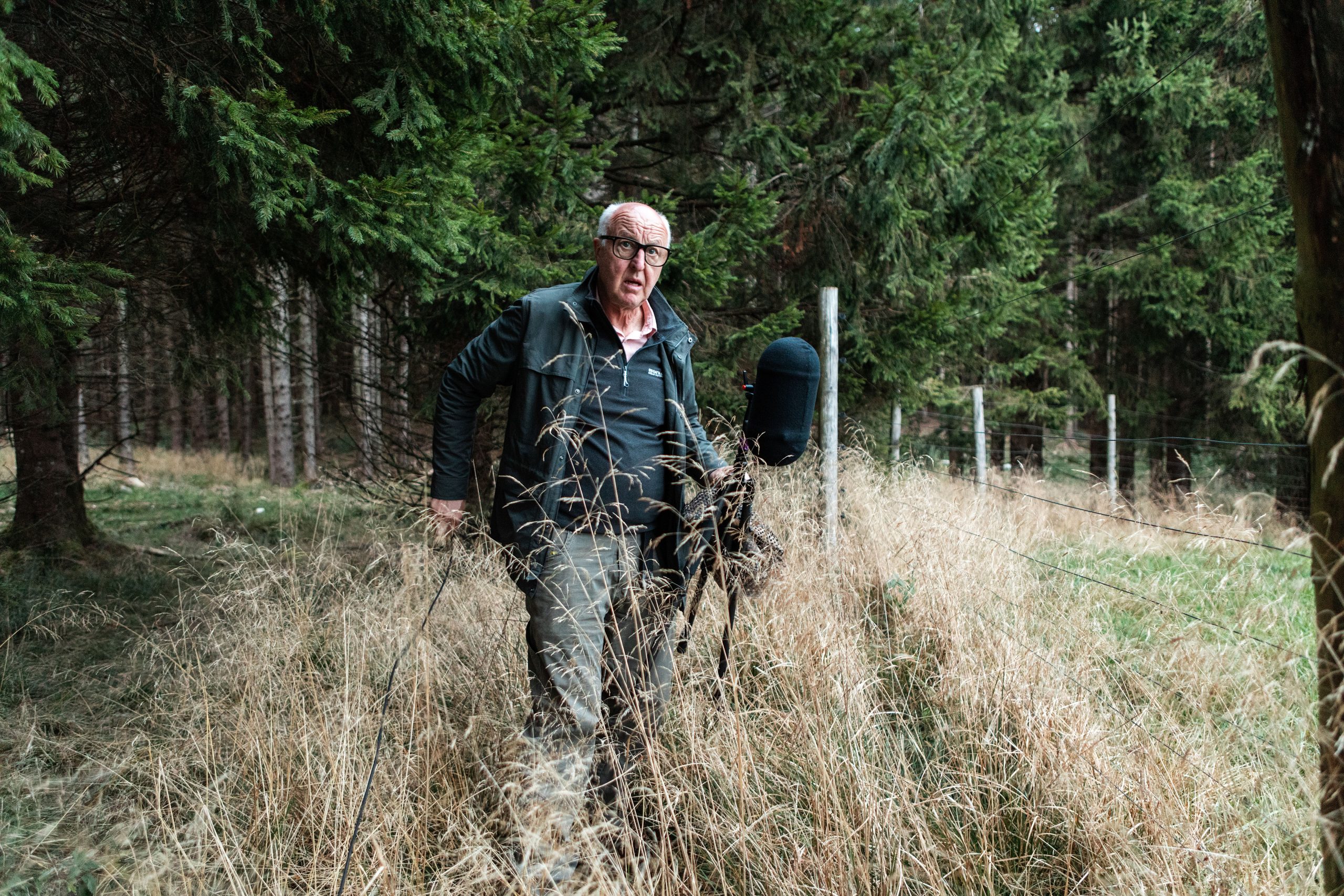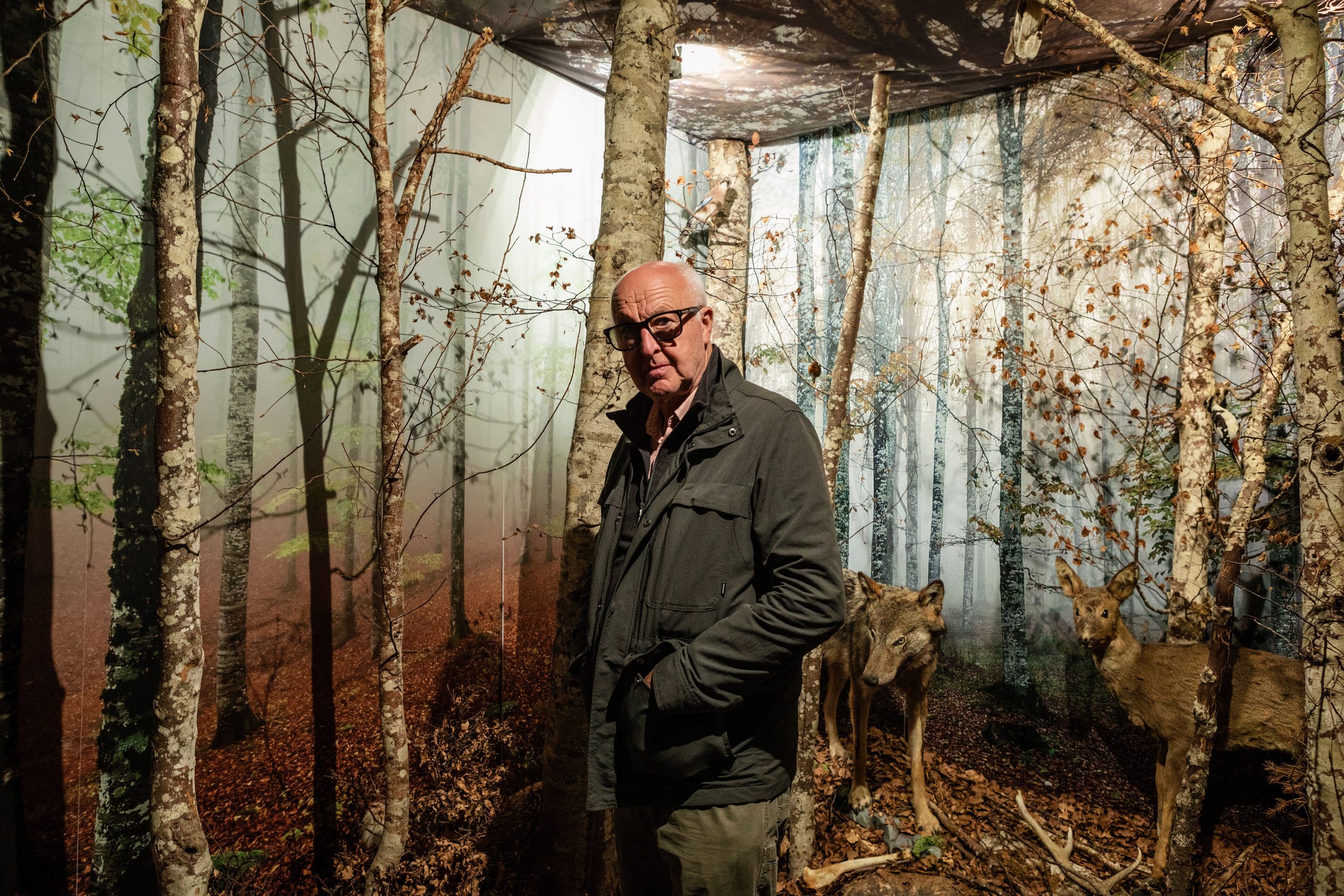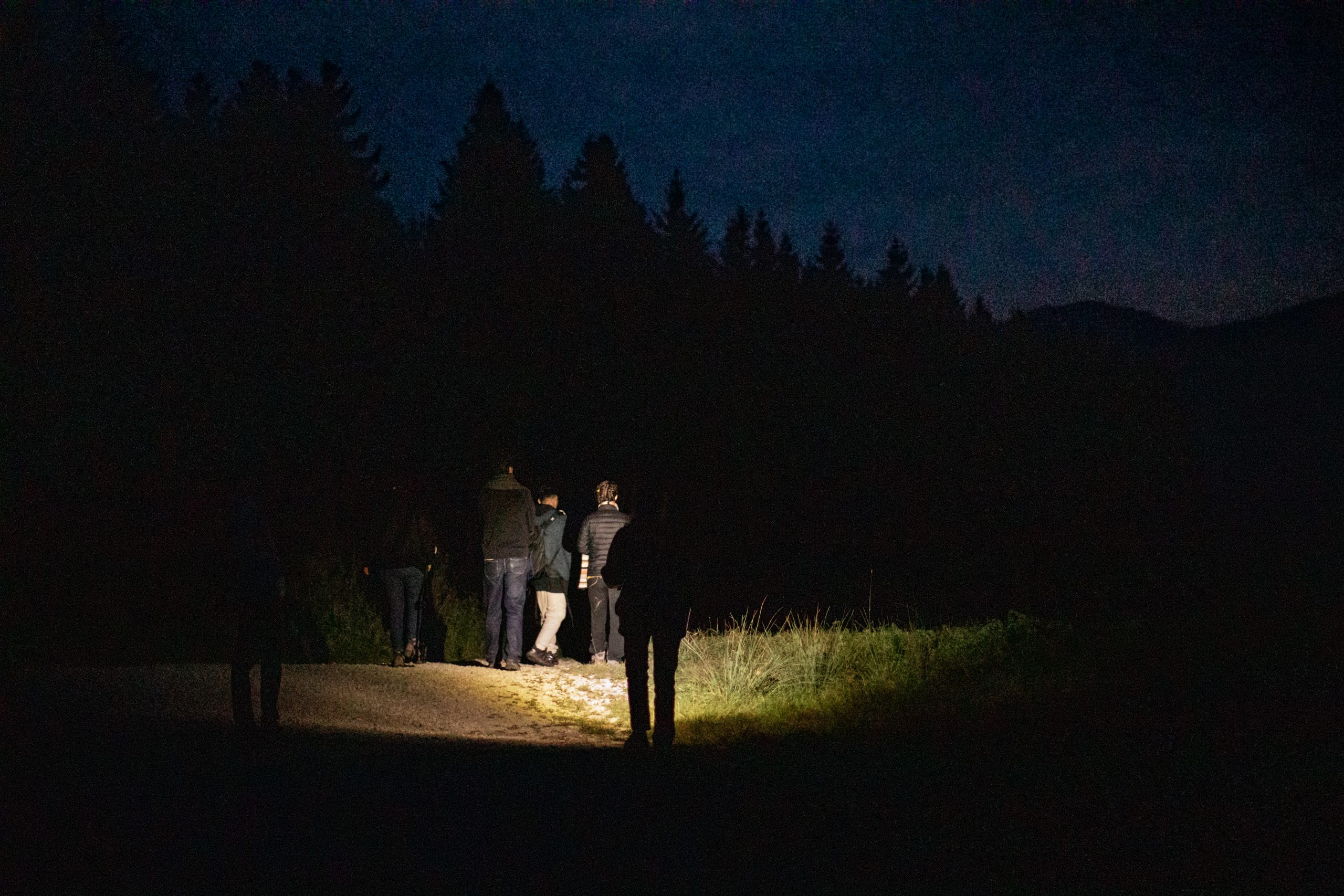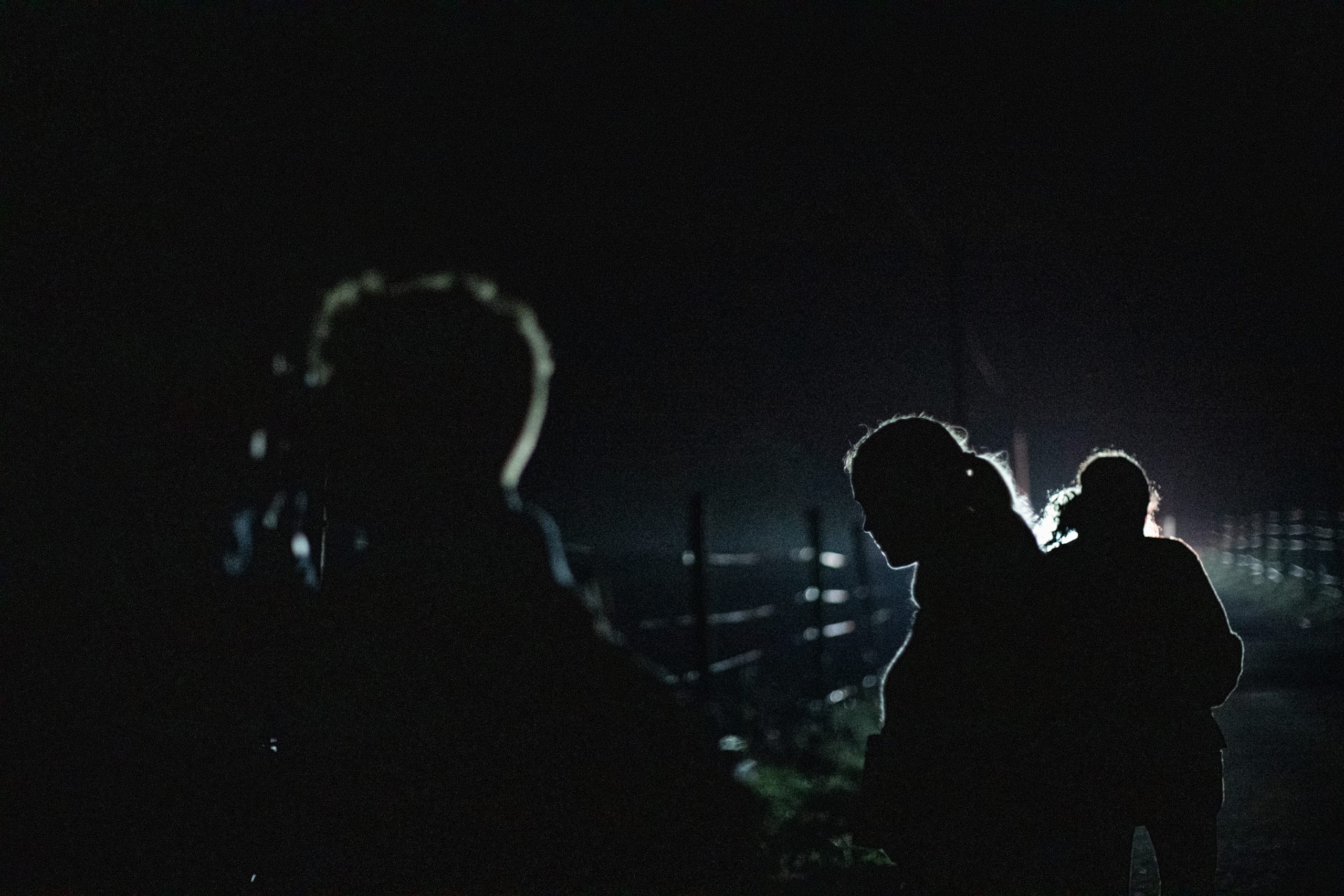A journey south / How to listen to a forest
October 12, Cansiglio Forest.
A bus from the valley begins to drive along the road that bisects the plateau. It turns right, continues a little further and stops near a farmhouse. It is 11 am and the fog has just cleared. The air is decidedly cooler than on the lowland, and the chirping of birds seems sharper and closer.
About 20 fabricanti get off the bus to join the Program Director Carlos Casas and the sound recordist Chris Watson. On top of a wooden table, in the center of the lawn surrounding the farmhouse, stands the instrumentation with which Watson hopes to record a sound: the roaring of deer, that is, the verse that the males of this species emit when they are in love. It is a very low-pitched bellow. And it has two functions: to intimidate rivals and to invite females to mate.
As Watson explains how to place camouflage for the equipment or when to use omnidirectional microphones instead of unidirectional ones, it becomes clear that the deer and their roaring are just a pretext: today fabricanti are here to learn about listening. Just a few steps inside the forest and the sounds change. The trampling, muffled by the underbrush, becomes lighter. The breaths deeper: pine resin can be inhaled. After a few minutes of walking, fabricanti come to a small glade. Looking northeast, the trees break off and the meadow ends in a steep wall. The acoustic is excellent. In this setting, even the dense webs of spiders seem part of the design of a large recording studio surrounded by greenery. Watson pauses.
All that is left now is to wait for dusk. Attempting to distinguish distant sounds, avoiding talking to companions. Peering through the trees, looking for a trail. Some fresh traces on the ground signal that someone has been here recently. A little further on, a nicked bark unmistakably reveals the passage of a deer. The antlers begin to grow in March, slowly and under a layer of a tissue called velvet. By late summer, the antler is ready and the velvet begins to give deer an itchy sensation. Scratching on the trees can provide relief.
The antler can weigh up to 15 kg in an adult deer specimen. To sustain it, the musculature becomes more powerful and the roaring deeper. This is why younger males, between two and five years old, struggle to reproduce: their antler is more contained and their roaring is less loud. Females prefer more mature specimens with a baritone roaring.
This implies that the deer themselves are capable of listening to one another. When two males realize that the intensity of their roaring is similar, they address each other and clash. It is an intense but not deadly duel. The antler is used to dominate, not to hurt the opponent’s male. And when either deer is exhausted, it retreats. The victor can get (or get back) the female.
These are the details fabricanti record in their notebooks as two guides lead them inside the forest for sighting and listening. The deer are afraid of humans. That is why they wait until nightfall to go down to the valley to eat. Sitting and immobile, fabricanti hand binoculars to each other and scan the pastures at the edge of the forest. Then, they have to get up and change locations while making as little noise as possible. Every human passage generates a sonic impact on the environment and the animals that inhabit it.
Finally, the binoculars frame a moving herd of specimens, with the male in the middle, a hundred meters away. Fabricanti follow the scene. They do not hear the noises directly, but they can imagine them: footsteps on the gravel, hooves clashing on a fence, mandibles grazing the grass in the meadow. A few minutes later, darkness finally surprises the valley, and those moans that were barely audible from the distance now become more intense in volume and frequency. The binoculars are now useless. The microphones installed by Watson, on the other hand, become essential for picking up the deer’s roaring and establishing their location.
One call sounds somberly in front of fabricanti. Another one reaches them from the right. Yet another surprises them from an undefined point behind. They hear but cannot see. Just like deer, who hear each other but cannot see one another. The guides urge the group to return to the parking — it’s getting darker and this is deer territory, not human territory — and to pay attention to one sound in particular. Here in Cansiglio, in this season, a sharp thump means only one thing: tonight, too, the duel has begun.
Text by Giovanni Gerolin

